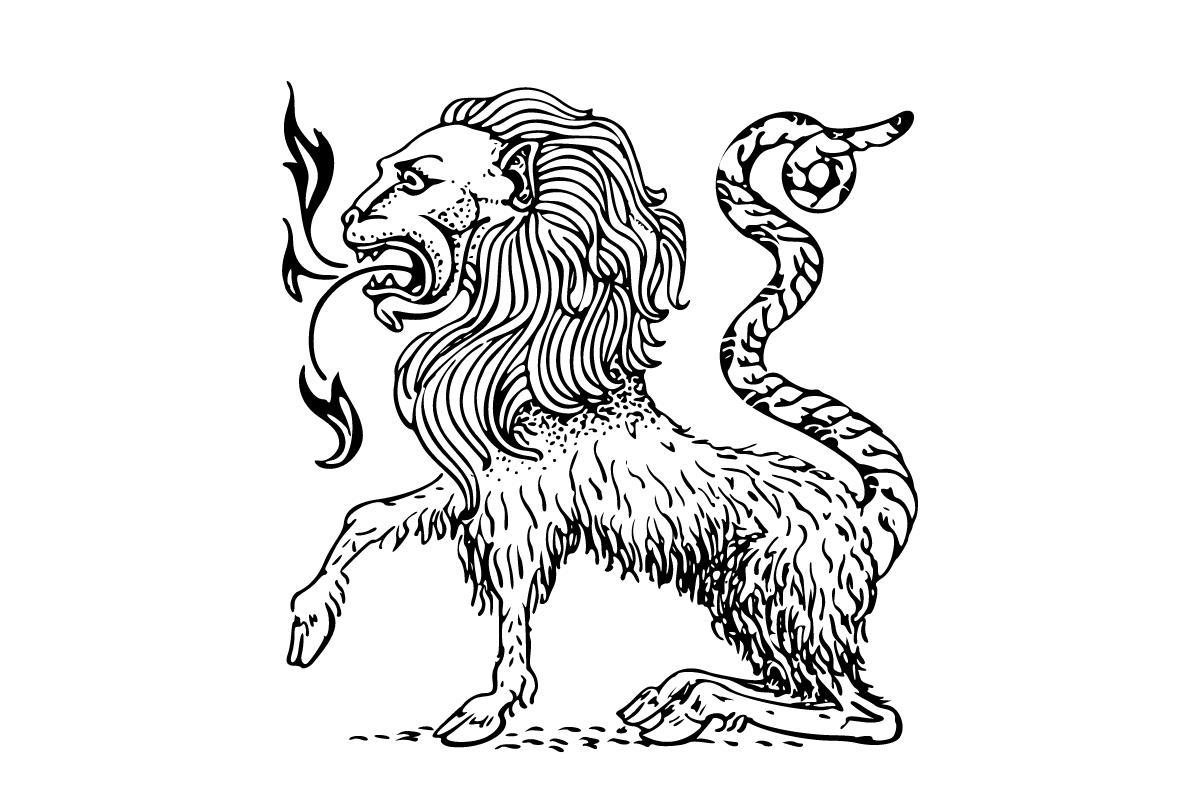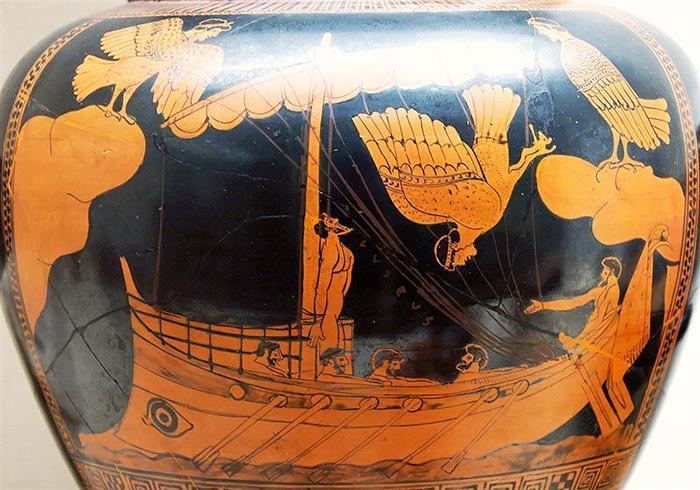Mythological Animals From Ancient Greece


The mythological animals from ancient Greece have permeated cultures worldwide, remaining as legends long after their origins have been forgotten. While mythological creatures from many cultures still influence modern thought, those from ancient Greece are particularly resonant. This is partly due to the Greek philosophers, mathematicians and other thinkers who birthed many of the ideas we take for granted today. It is also because of its influence over the Roman Empire which allowed it to be spread over Europe and later over the Western world in general. It is also because many of these ideas have been recorded for posterity.
Fortunately, this means we know more about mythological animals from ancient Greece than we do about many other legends. AnimalWised looks at the names at characteristics of these ancient Greek creatures and monsters, as well as what animals may have inspired them and vice versa.
- Amphisbaena
- Arachne
- Basilisk
- Centaur
- Cerberus
- Cetus
- Chimera
- Hippocampus
- Siren
- Lernaean Hydra
- Other mythological animals from ancient Greece
1. Amphisbaena
Amphisbaena was one of the most feared creatures in Greek mythology. The Greek word amphis means ‘both ways’, with this animal is represented by a snake with two heads. There is one head at each end of the body.
According to history, the origin of amphisbaena was the result of blood dripping from Medusa, one of the Gorgons. The Gorgons are one of the most well-known monsters from Greek mythology. This mythological animal is probably related to the Indian sand boa (Eryx johnii) or worm lizards (Amphisbaenia), since both animals have a head and tail which look similar to each other. Amphisbaena has also been represented in other mythologies.

2. Arachne
From the name Arachne, you may be able to tell what animal symbolizes this Greek mythological creature. Arachne was the daughter of a man who worked as a wool dyer. She was very good at weaving, but at the same time conceited. Such was her conceitedness, she challenged the goddess Athena with whom she competed to make the best fabric.
Although there are several versions of the story of Arachne, they all point out that Arachne's weaving was impeccable, but offensive to the gods. This enraged Athena who turned Arachne into a spider, thus creating an animal with influence in Greek mythology. Some take the story of Arachne to speak of how art relates to tyrannical power.
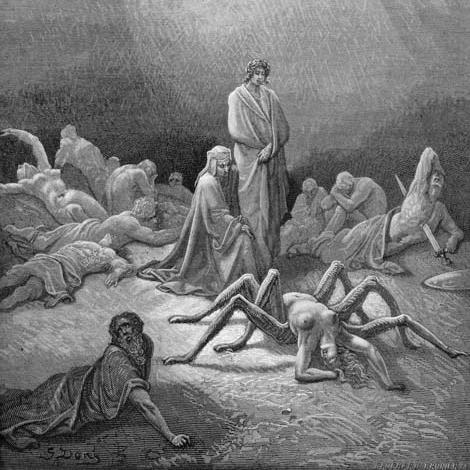
3. Basilisk
The basilisk was a mythological creature that hatched from a malformed bird's egg, although it was incubated by another animal. A serpentine neck and tail emerged, with a kind of crown on its head. The body was similar to that of a rooster, but with thorned wings, claws and a serpentine tail. Although this mythological monster began in ancient Greece, it can be seen famously in the Harry Potter saga where it appears as a giant snake.
The basilisk was very poisonous and greatly feared. Its gaze alone could kill anyone who was nearby. Today we know of a reptile native to America called the plumed basilisk (Basiliscus plumifrons) with which we can relate the animal from Greek mythology.
Learn more about how Greek mythology influences modern stories with our guide to the different animals from Harry Potter.

4. Centaur
One of the best-known mythological animals from ancient Greece is the centaur. This is largely due to its frequent depiction in various media which continues to this day. The centaur is a creature with the upper body of a man or woman (female centaurs are known as Centaurides) and the lower body of a horse. They are wild creatures associated with the duality of human nature, the liminal place where the body and spirit meet.
The origin of centaurs is believed to be when communities who did not ride horses first saw horses being ridden by humans. Especially from a distance, these people would look half human and half animal. Centaurs represent bravery, especially during war. They are loyal warriors which makes it unsurprising they have found their way into adventure stories from many cultures.

5. Cerberus
Another of the most influential animals from Greek mythology, Cerberus was the son of a monstrous nymph and a hurricane-related deity. This creature was a dog with three heads and a serpent's tail. They because the guard dog of the god Hades, protecting the gates of the underworld. Cerberus has been represented in various ways, sometimes with additional snake heads, but always as a fearsome and practically invincible creature.
Each of the three heads of Cerberus had their own name which are the following:
- Veltesta: head on the left.
- Tretesta: the centre head.
- Drittesta: the one on the right.
Being such a fearsome animal, Cerberus is often represented as having great similarity to Pitbull dog breeds. This is perhaps an unfair representation. Although Pit Bulls can appear to be dangerous, they can ne an incredibly loving and loyal companion when treated correctly.
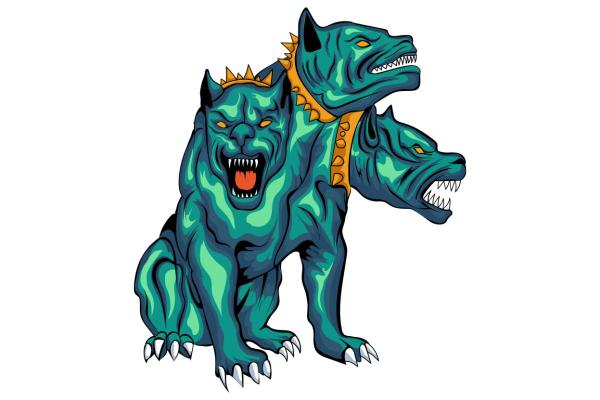
6. Cetus
The term cetacean derives from the Greek word kētŏs, which means ‘sea monster’. In Greek mythology, Cetus was indeed a marine animal. Cetus was a female monster that dominated the oceans. Cetus was depicted as a serpentine or dragon-like sea monster which was ridden by various Greek gods. It is often pictured fighting Perseus who was defending Andromeda after her parents tried to sacrifice her to placate Poseidon.
Since ancient times, the word ‘cetacean’ has been used to refer to sea animals such as whales, which breathed with lungs. It is not surprising that Cetus bears a certain similarity with the cetaceans we know today. Learn more with our guide to the different types of cetaceans.

7. Chimera
In Greek mythology, the Chimera was another hybrid Greek mythological creature. This time it was the result of the union between Typhon and Echidna. It was a terrifying animal that devoured other animals and stalked populations. It is represented with the mixture of various animals. It had head of a lion, but also an additional goat head emerging from its back and the tail of a serpent. It was one of the most fearsome mythological animals from ancient Greece.
Although there are several versions, it was probably the mother of the sphinx, another of the animals in Greek mythology. This was a creature with the body of a lion, wings and a woman's head, symbolizing destruction. It is possible that she was also the mother of the Nemean lion, which was not just any lion, but a monstrous and ruthless one defeated by Hercules.

8. Hippocampus
In Greek mythology, the hippocampus is related to horses. However, they were large marine animals and somewhat different from terrestrial horses. They are depicted with the front body of a horse, but the rear was monstrous and more closely resembled a fish. The horses that Poseidon had were said to be hippocampi, pulling his golden chariot through the seas.
Although it was intended to be like a land horse, we can see the resemblance of the hippocampus in seahorses. Although not related to the terrestrial mammal, seahorses do appear to have the head of a horse and the body of a fish. The real seahorse is not monstruous at all, but one of the most gentle and fascinating creatures in our seas. Learn more with our list of fun facts about seahorses.

9. Siren
These beings have been present in a multitude of mythologies, stories and legends from around the world. The mermaids of Greek mythology are not as we see them now represented, nor are they like those of Norse mythology. These creatures linked to the world of the dead were personified with the body of a bird and the head of a woman. They emitted songs that attracted sailors, often believed to be the cause of many shipwrecks.
It was in the Middle Ages when it changed its representation to the body of fish. At present, the order Sirenia is represented by the dugong and different types of manatees. It is believed this name is derived from sailors thinking these animals were mermaids, although this is difficult to see when you look at them up close.

10. Lernaean Hydra
Also known as the Hydra of Lerna, the Lernaean Hydra was a sea monster from Greek mythology that was represented as a large animal with four legs. It had sharp claws and multiple serpentine heads with highly poisonous breath. In addition to these features, one peculiarity was based on the fact that if one head was cut off, two more would emerge. As with Cerberus, its function was to guard the gates of the underworld.
It is very popular to hear that the only way to kill a snake is to cut off its head, something that should only be done if the animal represents a real danger to a person. Many snakes are unnecessarily killed this way, so if you find a snake in the wild, we recommend getting away from it and not disturbing it.

Other mythological animals from ancient Greece
There are creatures, monsters and other animals represented in Greek mythology. The following are some less commonly known with pictures of some below:
- Harpy
- Ichthyocentaur
- Typhon
- Sphinx
- Lycaon
- Nemean lion
- Manticore
- Minotaur
- Onocentaur
- Ophiotaur
- Orthral
- Scylla
- Telchines
- Empusa
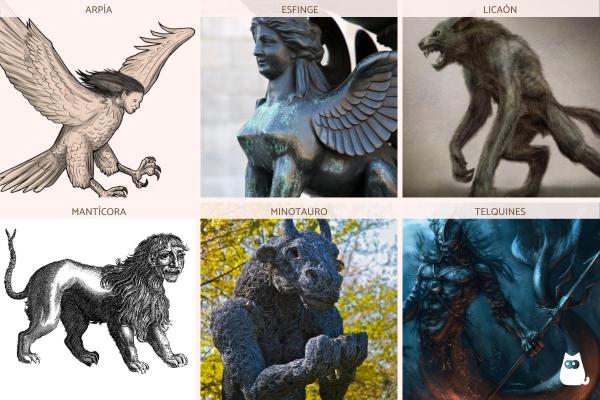
If you want to read similar articles to Mythological Animals From Ancient Greece, we recommend you visit our Facts about the animal kingdom category.
- Shua, A. (2011). Gods and Heroes of Greek Mythology. Retrieved from: https://periodicooficial.jalisco.gob.mx/sites/periodicooficial.jalisco.gob.mx/files/dioses_y_heroes_de_la_mitogoia_griega-_ana_maria_shua.pdf












